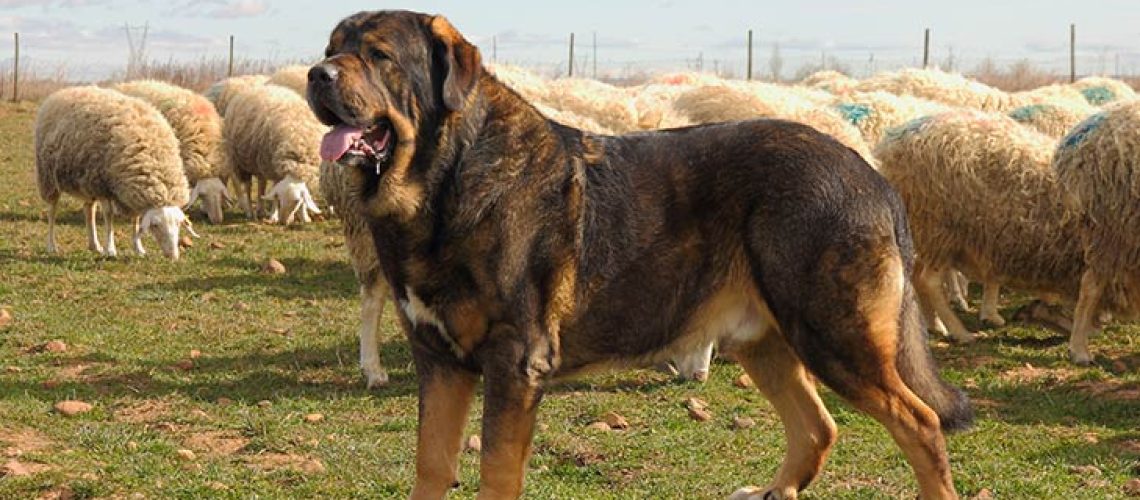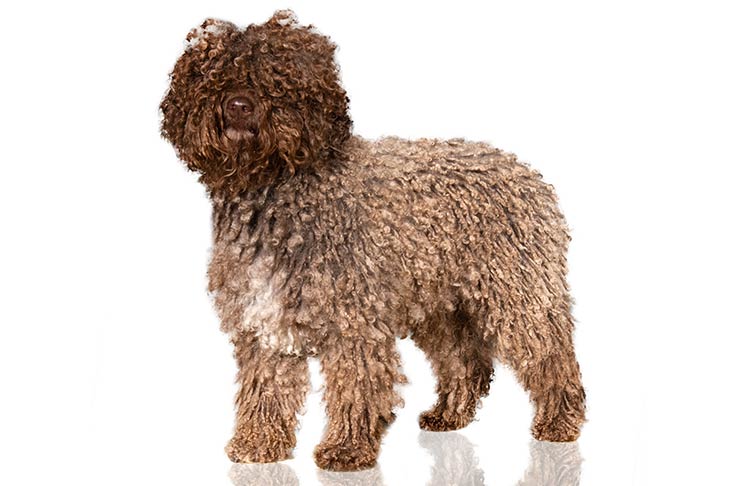Key Takeaways:
- The Spanish Mastiff is a large and powerful dog breed known for its protective nature.
- They require a lot of space and exercise to prevent boredom and maintain their physical health.
- Spanish Mastiffs have a thick double coat that requires regular grooming to keep it clean and free from matting.
- This breed is generally good with children and other pets, but early socialization is important to ensure proper behavior.
- The Spanish Mastiff has a relatively short lifespan compared to other breeds, averaging around 10-12 years.
Are you a dog lover? If so, get ready to embark on an exciting journey into the world of the Spanish Mastiff! This majestic and powerful breed has captured the hearts of many with its unique characteristics and gentle nature. By understanding more about this remarkable dog, you will not only gain valuable knowledge but also discover how to provide the best care for your furry friend. So, let's dive in and uncover the secrets of the Spanish Mastiff together!
What is a Spanish Mastiff? Description and Size
The Spanish Mastiff is a large and powerful dog breed that originated in Spain. They are known for their impressive size, with males typically weighing between 140 to 200 pounds and standing around 28 to 35 inches tall at the shoulder. Females are slightly smaller, but still substantial in size.
This breed has a strong and muscular build, with a broad head, deep chest, and thick neck. They have a dense double coat that helps protect them from harsh weather conditions. The coat can come in various colors such as brindle, fawn, or black.
Size:
- Males: 140-200 pounds, 28-35 inches tall
- Females: Slightly smaller than males
Appearance:
- Large and muscular build
- Broad head, deep chest, and thick neck
- Dense double coat in various colors
Temperament of a Spanish Mastiff: Friendly or Protective?
The Spanish Mastiff is known for its gentle and calm nature. Despite its imposing size, this breed is typically friendly and affectionate towards its family members. They are loyal and protective by nature, making them excellent guard dogs.
However, it's important to note that the Spanish Mastiff can be wary of strangers and may exhibit protective behavior if they perceive a threat. Early socialization is crucial to ensure they become well-rounded dogs who can differentiate between friendliness and potential danger.
Traits:
- Gentle and calm nature
- Loyal and protective
- May be wary of strangers
Socialization:
Early socialization is crucial for a Spanish Mastiff to help them become comfortable around different people and situations. Introducing them to various environments, sounds, and experiences from a young age will help them develop into well-adjusted adult dogs.
Common Health Issues and Prevention for Spanish Mastiffs
Like any other breed, the Spanish Mastiff can be prone to certain health issues. It's important for owners to be aware of these potential problems and take preventive measures to keep their dogs healthy.
One common health issue in large breeds like the Spanish Mastiff is hip dysplasia. This is a condition where the hip joint doesn't develop properly, causing pain and mobility issues. Regular exercise on non-slip surfaces, maintaining a healthy weight, and providing joint supplements can help prevent or manage this condition.
Common Health Issues:
- Hip dysplasia
- Bloat (gastric torsion)
- Ectropion (eyelid turning outward)
Prevention Measures:
- Regular exercise on non-slip surfaces
- Maintaining a healthy weight
- Providing joint supplements if recommended by a veterinarian
Exercise Needs of a Spanish Mastiff: How Much and What Activities?
The Spanish Mastiff is a moderate energy breed that requires regular exercise to stay happy and healthy. Daily walks or play sessions in a securely fenced yard are essential for them. However, it's important not to overexert them, especially when they are young and still growing.
While they may not be as active as some other breeds, mental stimulation is also important for Spanish Mastiffs. Puzzle toys, obedience training sessions, and interactive games can help keep their minds sharp and prevent boredom.
Exercise Requirements:
- Daily walks or play sessions
- Moderate energy level
- Avoid overexertion, especially in young dogs
Mental Stimulation:
Puzzle toys, obedience training sessions, and interactive games can provide mental stimulation for a Spanish Mastiff. These activities help keep their minds engaged and prevent destructive behaviors that may arise from boredom.
Grooming Needs of a Spanish Mastiff: Brushing and Professional Grooming
The Spanish Mastiff has a thick double coat that requires regular grooming to keep it in good condition. They have a dense undercoat that sheds seasonally, so brushing them at least once a week is recommended to remove loose hair and prevent matting.
Bathing should be done as needed or when they become dirty. It's important to use dog-specific shampoo to avoid irritating their skin. Additionally, regular nail trims, ear cleaning, and teeth brushing should be part of their grooming routine to maintain overall hygiene.
Grooming Needs:
- Regular brushing to remove loose hair
- Bathing as needed with dog-specific shampoo
- Nail trims, ear cleaning, and teeth brushing
Professional Grooming:
If the owner is not comfortable or experienced with grooming tasks such as nail trimming or ear cleaning, it's advisable to seek the help of a professional groomer. They can ensure these tasks are done safely and effectively.
Training Tips for Spanish Mastiffs: Are They Easy to Train?
Spanish Mastiffs are intelligent dogs, but they can also be independent and stubborn at times. This can make training a bit challenging, especially for first-time dog owners. However, with patience, consistency, and positive reinforcement techniques, they can be trained successfully.
Early socialization is crucial for Spanish Mastiffs to help them become well-rounded adults who are comfortable in various situations. Basic obedience training should start from a young age and gradually progress to more advanced commands as they mature.
Training Tips:
- Be patient and consistent
- Use positive reinforcement techniques (treats, praise)
- Start early socialization and basic obedience training
Socialization:
Socializing a Spanish Mastiff involves exposing them to different people, animals, sounds, and environments in a positive way. This helps them develop confidence and good manners around others.
Dietary Needs for a Healthy Spanish Mastiff: Feeding and Restrictions
A balanced diet is essential for the overall health of a Spanish Mastiff. Their nutritional needs may vary depending on factors such as age, activity level, and any underlying health conditions. It's important to consult with a veterinarian to determine the appropriate diet for an individual dog.
Their diet should consist of high-quality dog food that provides all the necessary nutrients. Feeding them twice a day in measured portions helps prevent obesity. Treats can be given occasionally as rewards during training sessions but should not make up a significant portion of their daily calorie intake.
Dietary Needs:
- High-quality dog food
- Feeding twice a day in measured portions
- Treats given occasionally as rewards
Consultation with Veterinarian:
A veterinarian can provide personalized dietary recommendations for a Spanish Mastiff based on factors such as age, weight, and any specific health concerns. Regular check-ups can help monitor their overall health and make necessary adjustments to their diet if needed.
In conclusion, the Spanish Mastiff is a large and powerful dog breed known for its protective nature and loyalty. Taking care of this breed involves providing proper training, socialization, and regular exercise to ensure a happy and healthy companion.
Are mastiffs high maintenance?
The Mastiff has a short coat that usually only requires basic grooming such as brushing, bathing, and nail trimming. This breed tends to shed moderately. It is also important to keep the Mastiff's ears and facial skin folds clean and dry if they have them.
How do you take care of a Spanish Mastiff?
To keep your Spanish Mastiff in good health, it is important to provide routine care, a balanced diet, and regular exercise. During the shedding seasons in fall and spring, it is recommended to increase the frequency of grooming. Spanish Mastiffs typically have healthy teeth, but brushing them at least twice a week is beneficial. It is important to note that they can be lazy, so daily walks are necessary to ensure they get enough exercise.
Do Spanish mastiffs bark a lot?
Spanish mastiffs are typically loving and calm when with their family. However, they can be cautious and even wary of strangers and other dogs, which can greatly affect their overall temperament. While they don't bark excessively, they will use their deep bark as a warning signal for potential threats.
Can a Spanish Mastiff live indoors?
Due to its large size, it is not advisable to keep a Spanish Mastiff in an apartment unless you are committed to taking it on regular walks as a pack and allowing it to rest for most of the day. These dogs are not very active indoors and should have access to a spacious yard at the very least.
Are mastiffs hard to housebreak?
Training a Mastiff puppy to use the bathroom is similar to training any other puppy. You need to show your puppy where they should go to the bathroom and reward them for doing so. Mastiffs are eager to please, so your Mastiff puppy will be eager to learn from you.
What are the disadvantages of mastiffs?
English Mastiffs often experience health problems, with one of the most severe being hip dysplasia. This condition can hinder their mobility and cause significant discomfort as time goes on. Regrettably, hip dysplasia is not the sole health issue that commonly affects English Mastiffs.















